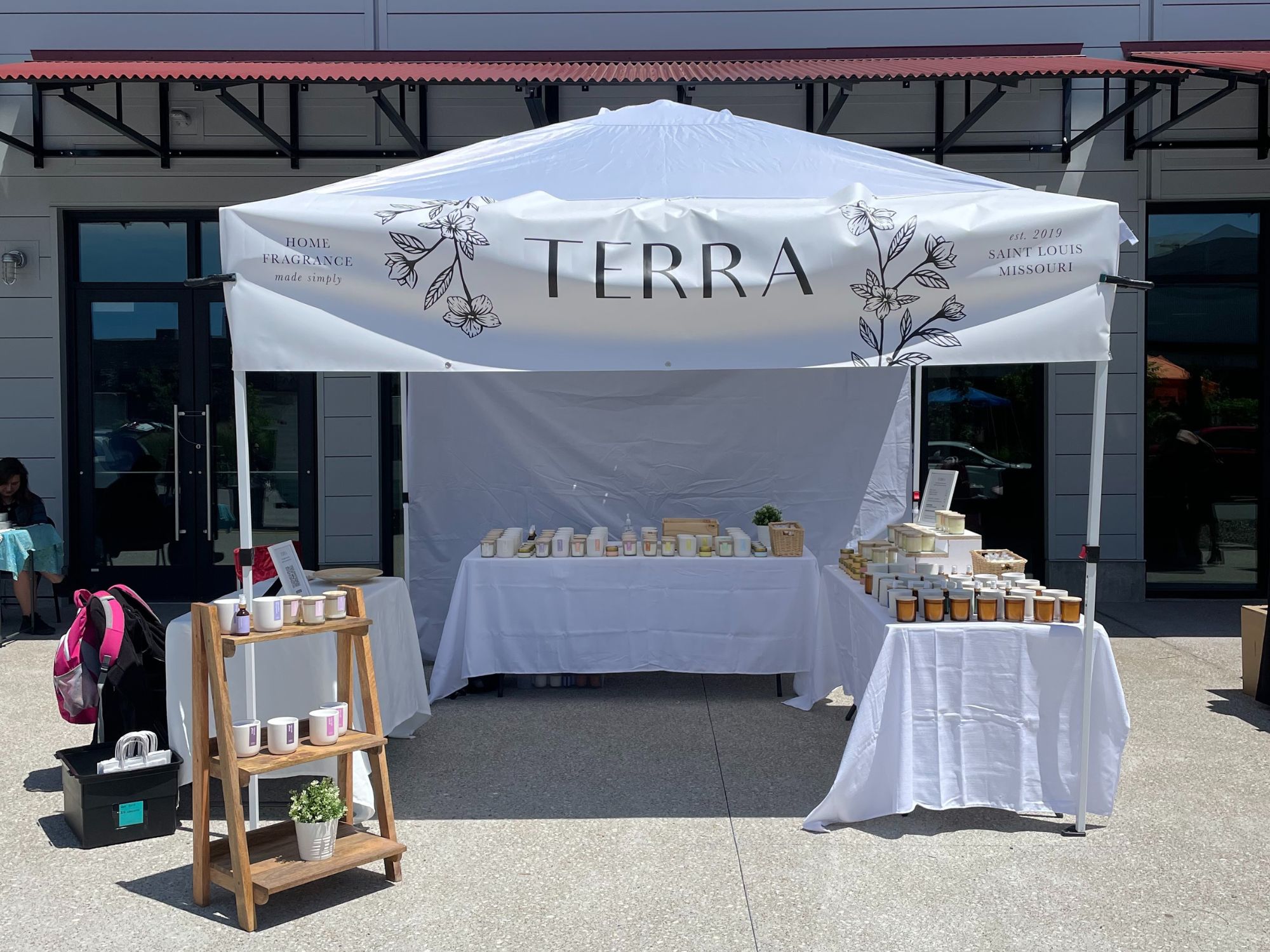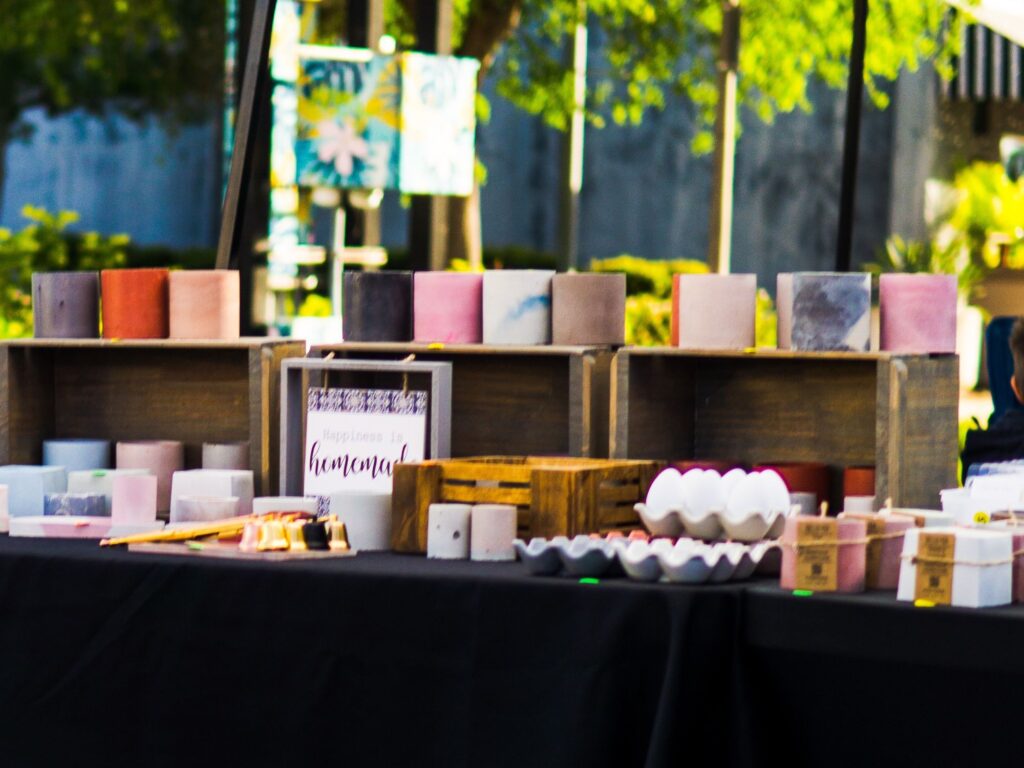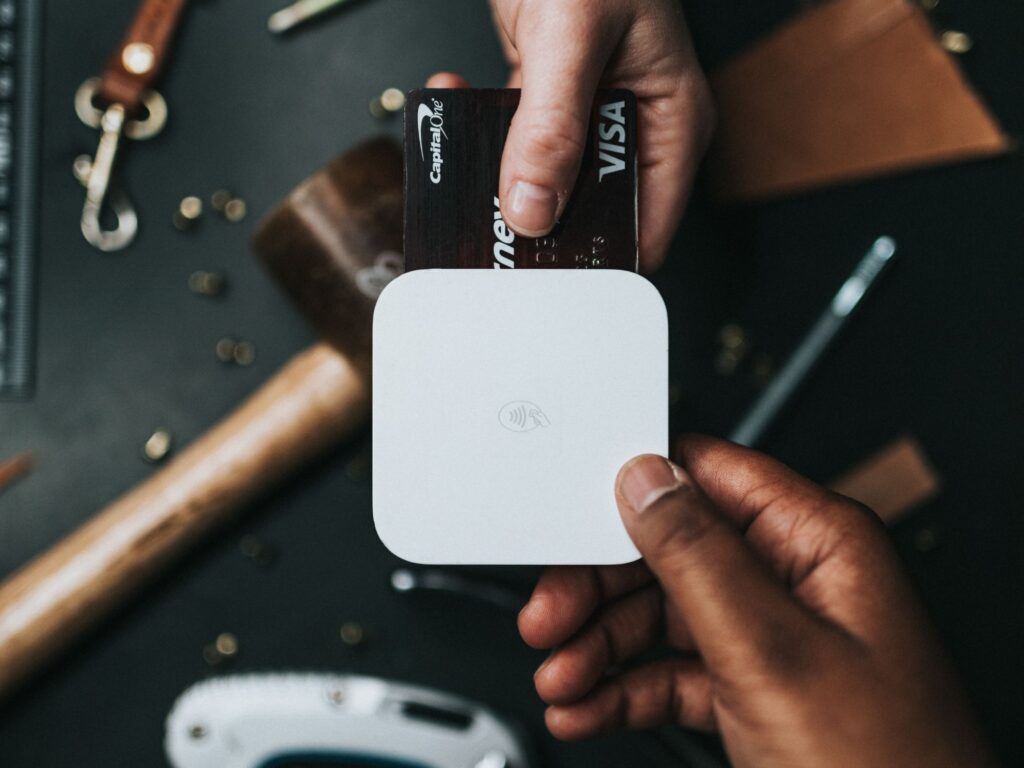
Farmer’s markets offer great opportunities for handmade businesses to connect with customers and make sales. While it may seem as easy as grabbing your goods, setting up a table, and bringing in customers, there are actually tips and strategies to keep in mind to improve your odds of success and increase your profitability. In order to do this, you must properly figure out how set up for a pop-up.
Whether your goal is to sell on occasion to earn some money on the side or you dream of bringing in a steady income by selling your goods to the community, there are some steps you need to take to help boost your chances for success…
Make a Business Plan

It never hurts to create a business plan before you get started. This business plan can be used to outline your goals, how you plan to finance your business, and your marketing plan. This plan can help you be more focused and know what to do to achieve what you are projecting. Remember to make your business plan achievable. You should have short-term goals, as well as long-term goals. Think of what you want to accomplish your first year of business. And what you want to accomplish within the first 5 years of business. Be realistic, but don’t be afraid to challenge yourself. Starting a business is hard! If you’re not challenged, you’re probably not doing something right.
Visit Pop-ups and Farmer’s Markets Beforehand

One of the biggest factors in how to set up for a pop-up your pop-up is the actual market itself. You need to find a market that fits with what you want to accomplish. The best way to make that determination is to go to a market or pop-up and see for yourself what it’s like, and what the people are like. You need to know that every market has its own culture. Some of pop-ups and farmer’s markets are focused to cater busy shoppers. While other ones are more social events with music and activities for the guests.
When visiting the markets you are interested in, keep your eyes open to see if they have a need for what you’re offering. Pay attention to if it aligns with your business goals, if they have a good amount of shoppers, and the different types of vendors. Gathering those insights can give you a good sense of what to expect. It can allow you to see if the market aligns with your business and what you want to accomplish out of your pop-up or farmer’s market experience.
Learn the Rules of Pop-ups
Every pop-up and farmer’s market has its own set of rules. You will need to check with organizers to see what types of items, tables, and selling methods are allowed. You must learn beforehand about local ordinances and regulations. Depending on local regulations, you may be required to register your business before you take part in a farmers’ market or pop-up event. Some farmer’s markets and pop-ups require you to provide an Employer Identification Number (EIN) or Taxpayer Identification Number (TIN). Gathering this information and registering the correct paperwork can take time. Make sure you do this well before it’s time for the market. It is not a last minute task.
Be aware when figuring out how to set up for a pop-up that some markets require their vendors to have their own business insurance too. Even if this isn’t a requirement, you should still want to research your options to protect yourself from liability. This should be something you accomplish early on while conducting your business plan. Insurance is never a detail to overlook or push off. Try to complete this task early on.
Set Up a Budget

Selling at a pop-up or farmer’s market can certainly be one of the more inexpensive ways to make money off your handmade goods. However, there are still some expenses you will need to consider. One of the most common expenses is a booth rental fee. You need to think about what other expenses might play into effect too.
Think of signage for your booth. For example, tablecloths, items to spruce up your display, price stickers, and the cost of materials and packaging for samples whiling contemplating how to set up for a pop-up. It may seem like a little amount of money and effort, but these tasks and small expenses can add up quickly if you don’t carefully plan ahead. Determine if you are capable of covering those expenses before you start selling. Research different places you can find these items to ensure you’re getting the best prices. Set a budget and stick to it.
It can also be a good idea to choose a small market without a huge vendor fee. Or choose a market that doesn’t require you to invest in a lot of equipment for your first market. This allows you to learn the process and make some mistakes before they potentially have a negative impact on your business.
Keep in mind too that most farmer’s markets and pop-ups require you to provide your own tent and table. You’ll want to invest in this as it’s something you will use over and over again. Don’t forget small details like sandbags to help hold down your booth.
Type of Payments to Accept at Your Pop-up Booth

In a world where paying with plastic is quickly becoming the standard, you may be wondering if you should accept credit cards at your farmers’ market booth. Let’s evaluate the payment options for you to choose from.
Credit Cards
Mobile point-of-sale (POS) apps make it easier than ever to accept credit cards. With your smartphone or tablet, and a card reader provided by your chosen provider like Square, you can accept debit and credit cards. You can do this with ease without a bunch of heavy equipment and complicated systems. You could even score extras like stickers that advertise that your booth accepts debit and credit cards. Keep in mind that some processors charge additional monthly or per incidence fees. These charges can add up and affect your profitability, especially if you operate a small business with narrow margins. Be sure to research this before selecting your provider. You’ll want to make sure you have the budget for any extra costs that come your way
Another consideration to keep in mind whiling figuring how to set up for a pop-up, is whether or not you’ll be taking larger orders or custom orders. If this is the case, you’ll need to have the ability to create invoices for tracking your orders. And getting paid by your customers. Before you invest your time and money into fulfilling the upcoming orders, make sure you get paid by sending your customers an invoice that can be paid online. Some mobile POS systems allow you to create and send invoices. This is a huge convenience factor.
These are the best POS systems that we recommend you to use for a farmers’ market:
Square: Square has no monthly fee, flat-rate payment processing (2.6% + $0.10), and an inexpensive chip and contactless card reader ($49). You can use Square to take payments on virtually any phone or tablet.
SumUp: SumUp has flat-rate processing (2.75%), no monthly fee, and affordable mobile readers. With a $19 SumUp Plus reader and a phone or tablet, you can accept swiped, dipped, or tapped payments.
Shopify Lite: Shopify’s $9/month mobile processing plan. This is ideal for merchants who already use Shopify to sell online. However, it also can work for casual mobile sellers who don’t use eCommerce. Shopify’s tap and chip reader ($49) to process payments at a rate of 2.7% (or 2.4% if you have a higher Shopify plan).
Venmo or PayPal
Accepting Venmo or PayPal can be another virtual form of payment for your business at a farmer’s market or pop-up event. Be cautious when selecting these methods of payment, as sometimes it can raise the likelihood of scams. Although, it’s not likely, it does happen. Consider having a QR code on your booth’s table to make finding your account simple. We recommend having a sign displayed that shows all the forms of payment that you accept. This doesn’t stop customers from asking you still, but does allow you to have a visual for the customers to reference at checkout.
Cash
On the flip side, if you’re not able to accept credit card payments, you also have the option to handle cash yourself outright. Compared with taking credit cards, taking cash saves your business money. It can probably be the easiest form of payment. You won’t have to deal with recurring monthly charges for services you may or may not need. If you’re starting and you really don’t have an idea how your sales are going to be, accepting cash can be the best option. However, once your business starts growing, consider having more forms of payments to have more opportunities.
Prepare Your Product Inventory
Calculating the amount of inventory you’ll need for a market is the first step in preparing for your upcoming show and understanding how to set up for a pop-up. Knowing the crowd can help you determine what and how much product to bring to the market. If you’ve been a vendor in a farmer’s markets or pop-ups before, check your records to analyze your sales. How many products did you sell? What were your best sellers? How can you increase sales this year?
Take a look at your product line and assess how much product you can realistically plan to sell. Plan to bring more of your best sellers. Do you have products that are stuck in your shelves? Take those to start getting rid of products from past collections, or products that you’re not planning to sell anymore. This is where an automated system like Inventora can help you.
Managing Your Product Inventory
The inventory tracking system allows you to prepare production runs to make what you really need. It also allows you to figure out which products are your best sellers. And which can give you a clear vision of what to invest. You can see what you have and what you need. Once you have the products ready, have a price tag for every product. Make sure the tag stays with the product. Not knowing how much something costs not only can lose you money, but can lose you customers. As it appears unprofessional and can make you look unorganized.
We understand that creating an inventory is an investment of both time and supplies. If you’re just starting, it can be difficult to afford to bring thousands of dollars in for your inventory. You’ll need to decide what is best for you and your business for each market or pop-up. Remind yourself that you’re gradually growing and making new plans as you find what works for you and what doesn’t.
Your farmer’s market experience should be about learning who your customers are, where they are, and how you can appeal to them. As time goes on, you’ll be able to estimate your inventory and sales goals with more and more accuracy.
Prepare to Educate Your Customers

If you have unusual products, be prepared to explain what they are and how to use them. Be ready to describe your products and how you make them. Be prepared to explain the qualities of different varieties. If a customer asks which is the best, encourage them to try them all so they can decide which they like best!
Have extra material on your table that contains the mission of your brand. Include the list of your product prices, promotional and sales items, banners and signage, and brochures or business Cards. All of these details can help you have a better engagement with your customers. Plus allow them to really know what your business is and the story behind it.
You are your best asset! The more people feel like they know you, the more they will be inclined from purchase and repurchase from you. Don’t be afraid to share your story and get to know the people who visit your booth. This is also a great time to network. You should do everything you can to take advantage of this time and capitalize on it.
Now that you understand better how to set up for a pop-up, consider getting started organizing your inventory with Inventora to get a head start on streamlining your business in the early stages. Join Inventora’s hobby plan at no cost, or sign up for our business plan to have access to every feature. Sign up for the Inventora newsletter below to receive special offers that are exclusive to our users!

